Phonics Teaching Resources
Make teaching phonics easy with printable phonics worksheets, activities, games and more designed for primary teachers.
This collection of Australian curriculum-aligned teaching resources has been carefully reviewed by our expert teaching team to make sure every resource is classroom-ready — so we can make your lesson planning easier!
New to teaching phonics, or just looking for new ways to engage your students? Read on for a primer from our teacher team!
What Is Phonics?
You've likely heard the word 'phonics' thousands of times throughout your own education and maybe on one of those old as from the '90s. But what is phonics, exactly?
Phonics is technically defined as the systematic instruction of the relationships between letters and sounds in written language. But that's a mouthful, isn't it? More simply, phonics is the word we use to refer to the method of teaching reading by focusing on the relationship between written letters and the sounds they represent.
In phonics, kids learn how to decode written words by recognising the sound-symbol correspondence.
Phonics vs. Phonemic Awareness
When we start talking about letters and their sounds, we start to wander into phonemic awareness territory. So what's the difference?
The words phonics and phonemic are similar, and the two concepts are — surprise, surprise — related. But there are key differences.
Phonemic awareness is essentially the ability to identify and manipulate individual sounds — aka phonemes — in spoken language. It's those individual sounds and their correspondence to the letter symbols that can be used by kids to then decode written words.
So students learn to recognise the individual sounds of spoken language (phonemes) and how these sounds can be represented by letters (graphemes) in written language. Then they apply this knowledge to decode written words by understanding the sound-symbol correspondence.
Consider this example:
- Let's say your student can identify the separate sounds in a spoken word such as 'cat' (i.e., /k/ /a/ /t/). That's phonemic awareness.
- Now let's say you're teaching that same student that the letter 'c' represents the /k/ sound and that the letter 'a' represents the /a/ sound, and that these sounds combine to form the word 'cat.' That's phonics!
How to Teach Phonics in Primary School
OK, you probably already know that phonics is all about teaching word recognition via grapheme-phoneme associations and letter-sound correspondences.
It’s a means of teaching early readers the pieces that make up a word so they can blend them together to decode the English language as readers and writers.
But how do you teach it?
In the earliest stages, phonics instruction typically begins with teaching students the most common letter-sound relationships. You start with consonants, then move on to vowels, then consonant blends.
Students then learn to sound out words by decoding the letters and blending the sounds together to form words.

Phonics Vocabulary Terms to Remember
The English language system is one of the hardest to teach and learn, so how do you teach phonics? Let’s start with the phonics vocabulary.
- For starters, there are 26 letters that create approximately 44 phonemes, the word for the individual speech sounds that make up words. Put together, phonemes make words. OK, easy enough, right?
- Well, these phonemes can be written in more than 200 different letter combinations, known as graphemes. Graphemes can be made up of 1 letter (such as 'p' in 'pig'), 2 letters (such as 'gh' in ghost), 3 letters (such as 'igh' in night), or 4 letters (such as 'ough' in rough).
- Then there are digraphs or two letters that work together to make one sound — such as “ph” in graph. But wait, isn’t that a grapheme? Yup, a digraph is a type of grapheme.
- So is a trigraph, trigraphs, aka three letters that work together to make one sound, such as 'dge' in edge.
- And if you’re teaching phonics, you can’t forget dipthongs, the name for a sound that is formed by the combination of two vowels in a single syllable, such as 'ou' in loud.
Most students will spend foundation, year 1 and even year 2 getting a handle on all phonics elements!
- Plus Plan
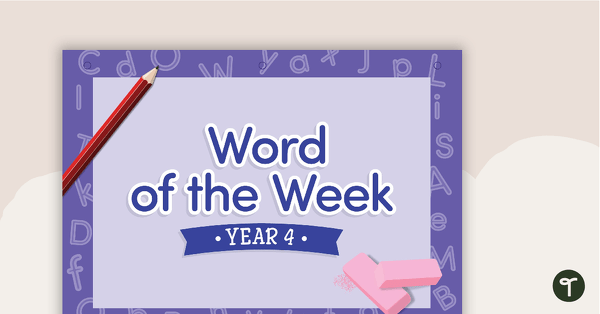
Word of the Week Flip Book - Year 4
A 43 page flip book for introducing new vocabulary to year 4 students.
- Plus Plan
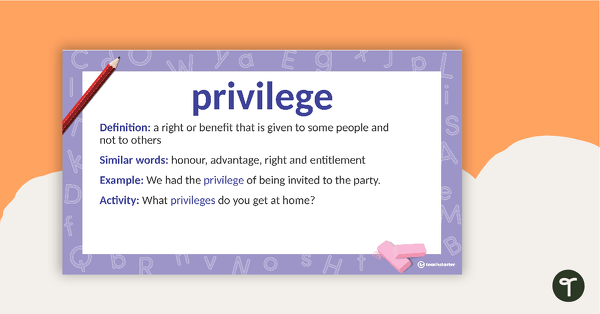
Word of the Week PowerPoint - Year 4
A 40 slide PowerPoint Template for introducing new vocabulary to year 4 students.
- Plus Plan

Missing Letter Alphabet Cards
A resource to help students identify the first letter of each word.
- Plus Plan
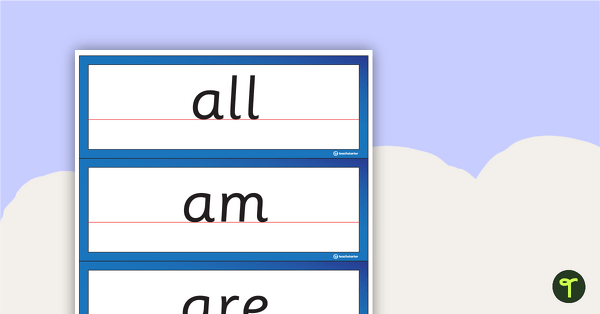
Sight Word Cards - Dolch Primer
Dolch primer sight words on flash cards.
- Plus Plan
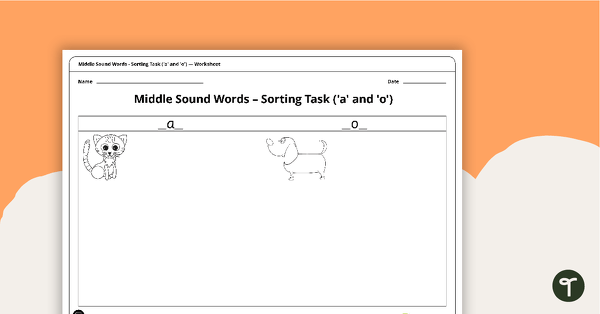
Middle Sound Words - Sorting Task ('a' and 'o')
3 different sorting tasks to use with students when learning about the 'a' and 'o' middle sounds.
- Plus Plan
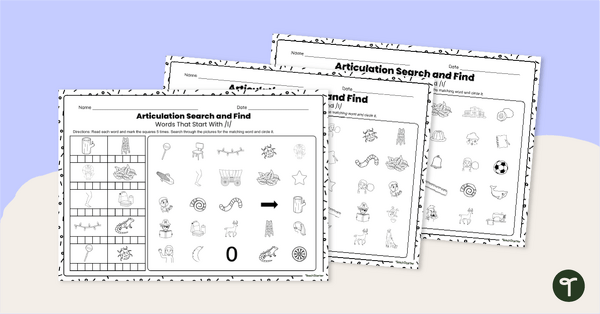
Initial, Medial, & Final L - Articulation Worksheets
Provide articulation practise with printable speech articulation worksheets for words with beginning, medial, and final /l/ sounds.
- Plus Plan

English Homework Helpers (F-2)
Give your students handy English Homework Helper printables to reference when working in class or at home.
- Plus Plan
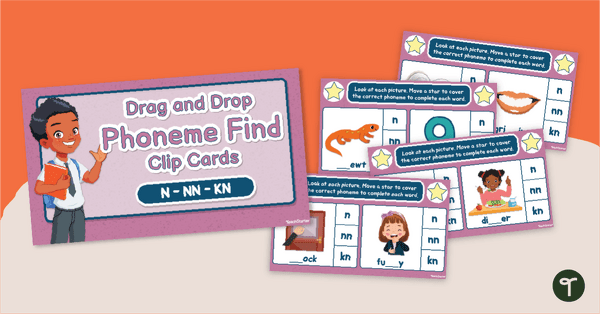
Phoneme Find - N, NN & KN - Spelling Game
Practise spelling words with n, nn or kn to spell the /n/ sound with an engaging Interactive Phonics Activity!
- Plus Plan
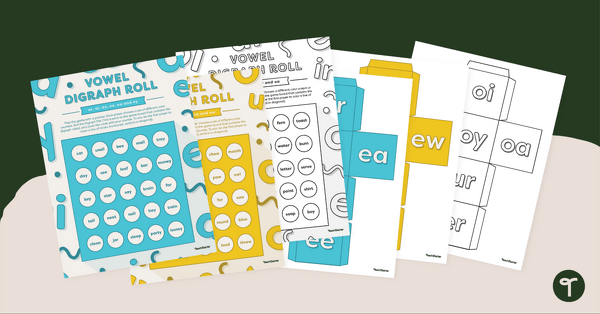
Vowel Digraph Cover Up Game
Practise vowel teams with your students with this set of three fun partner cover up games.
- Plus Plan
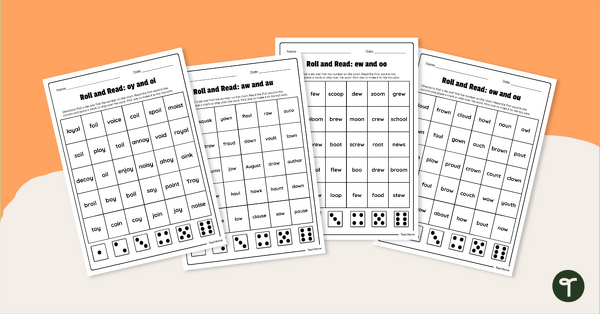
Roll and Read Diphthong Activity
Explore different diphthongs with this fun gamified diphthong activity.
- Plus Plan

Consonant Digraph CH Interactive Activity
Engage students in practising their learning around the consonant digraph of ‘ch’ with this fun beach-themed interactive activity.
- Plus Plan
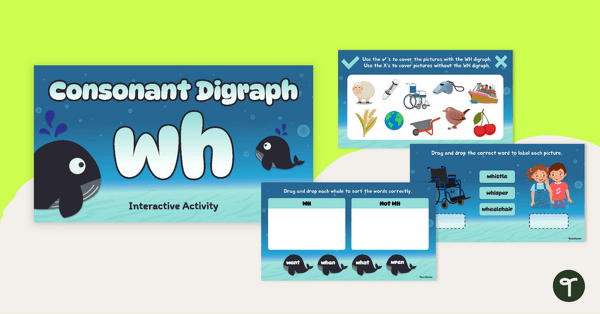
Consonant Digraph WH Interactive Activity
Engage students in practising their learning around the consonant digraph of ‘wh’ with this ocean-themed interactive activity.
- Plus Plan
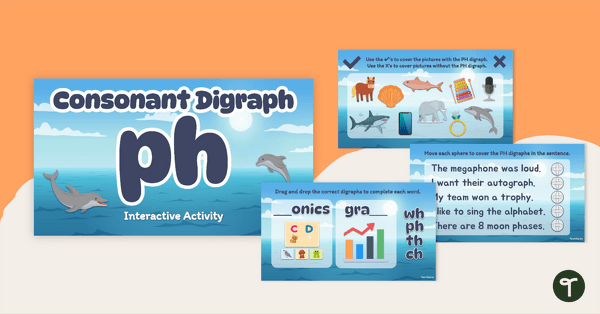
Consonant Digraph PH Interactive Activity
Engage students in practising their knowledge of the consonant digraph ‘ph’ with this fun ocean-themed interactive activity.
- Plus Plan
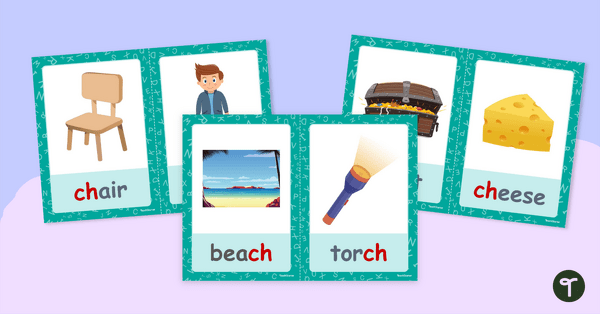
Ch Digraph Words With Images
Learn words that contain the 'ch' digraph with these word and picture flashcards.
- Plus Plan
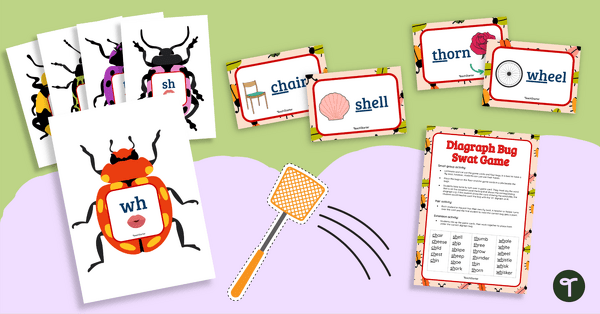
Digraph Bug Swatting Game
Practise digraph knowledge at the start of words with this small group bug swatting game.
- Plus Plan
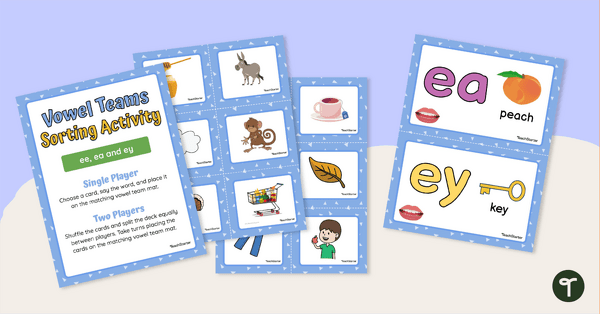
Vowel Teams Sorting Activity (EE, EA and EY)
Decode words with the EE, EA and EY vowel teams using 18 picture cards with sorting mats.
- Plus Plan
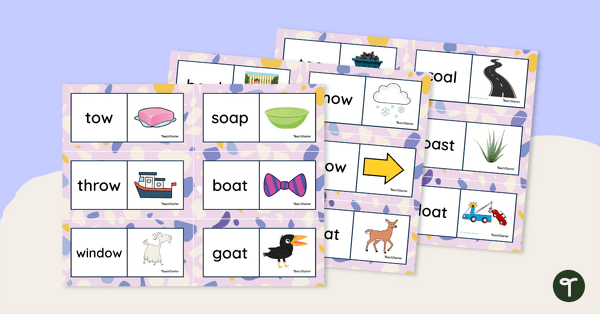
Vowel Digraph Dominoes - OA, OW, and OE
Decode words with oa, ow, and oe vowel team conventions for representing long vowel sounds using this set of 28 dominoes.
- Plus Plan
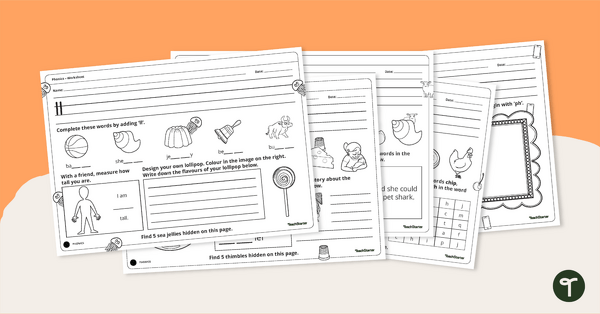
Consonant Digraphs Worksheet Pack
Practise writing and enhancing knowledge of consonant digraphs with this worksheet pack.
- Plus Plan
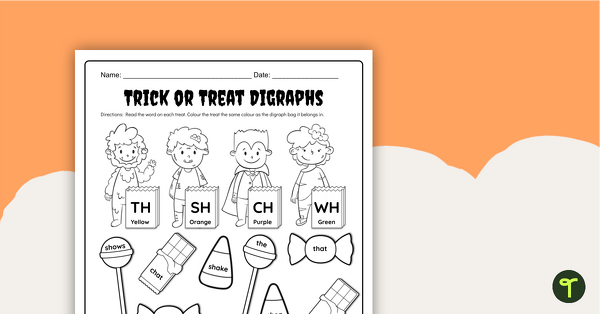
Trick or Treat Digraphs Worksheet
Sort Halloween Digraphs and colour them by code with a fun Halloween Phonics worksheet.
- Plus Plan
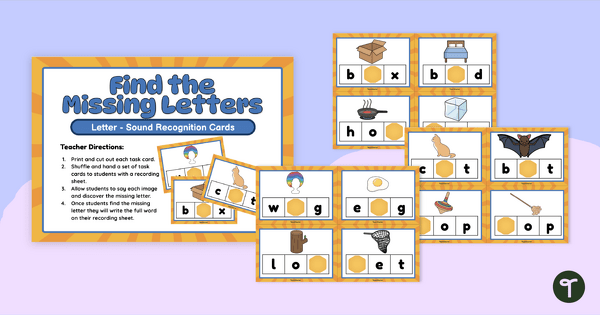
Missing Letters - Letter-Sound Recognition Task Cards
Buzz into letter-sound correspondence with this honey-themed missing letter task card set.
- Plus Plan
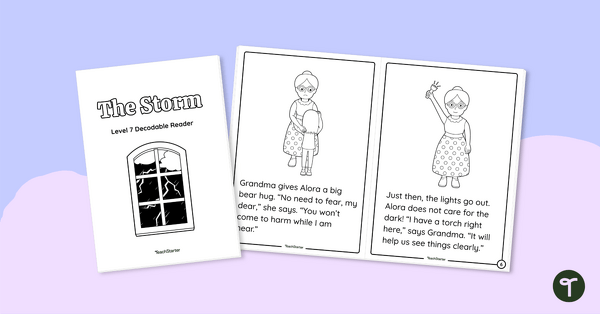
The Storm - Decodable Reader (Level 7)
Develop confident, successful readers with this phonics-based, printable decodable book.
- Plus Plan
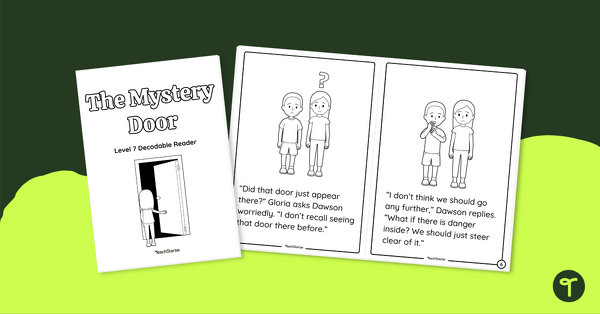
The Mystery Door - Decodable Reader (Level 7)
Develop confident, successful readers with this phonics-based, printable decodable book.
- Plus Plan
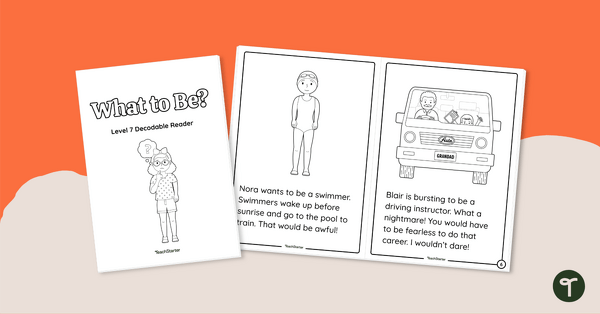
What to Be? - Decodable Reader (Level 7)
Develop confident, successful readers with this phonics-based, printable decodable book.
- Plus Plan
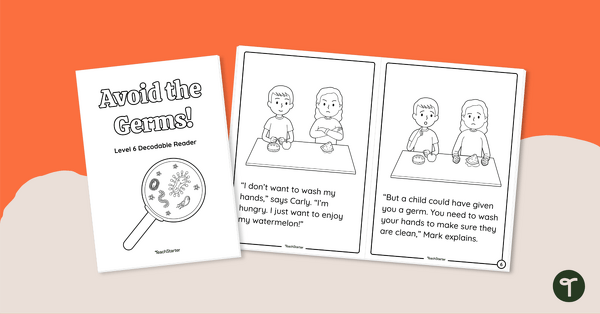
Avoid the Germs! - Decodable Reader (Level 6)
Develop confident, successful readers with this phonics-based, printable decodable book.
- Free Plan
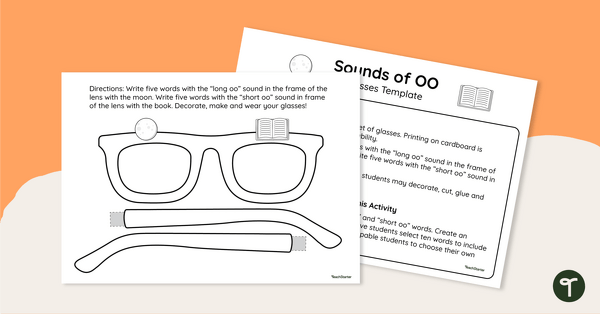
Sounds of OO - Glasses Template
Review the long and short ‘oo’ sound by creating a pair of ‘sOOper’ funky glasses!
- Plus Plan
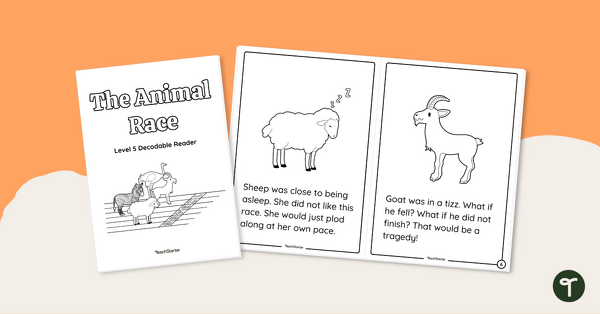
The Animal Race - Decodable Reader (Level 5)
Develop confident, successful readers with this phonics-based, printable decodable book.
- Free Plan
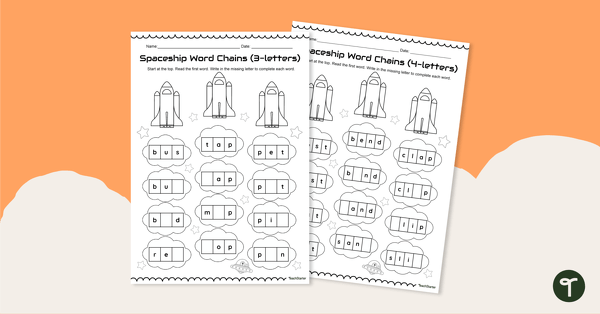
Spaceship Word Chains - Worksheets
Manipulate the individual phonemes in 3- and 4-letter words to create new ones with this set of word chain worksheets.
- Plus Plan
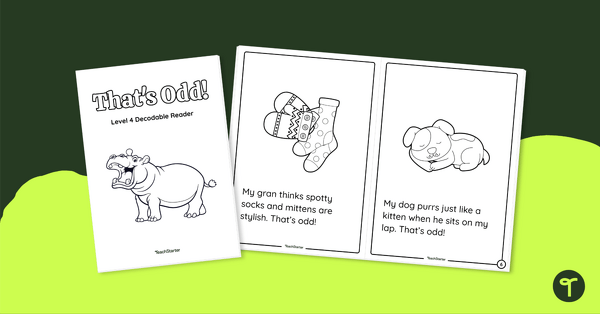
That's Odd! - Decodable Reader (Level 4)
Develop confident, successful readers with this phonics-based, printable decodable book.
- Plus Plan
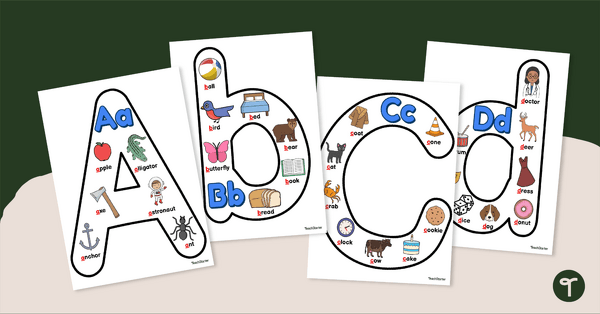
Alphabet Display (Letters and Images)
Display these lowercase and uppercase letter posters with images that begin with each letter.
- Plus Plan

Long OO Words - Word Search
Explore words containing some of the most common ‘long oo’ graphemes with this set of differentiated word searches.
- Plus Plan
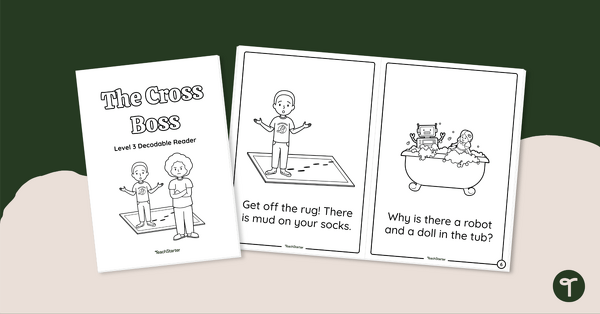
The Cross Boss - Decodable Reader (Level 3)
Develop confident, successful readers with this phonics-based, printable decodable book.
- Plus Plan
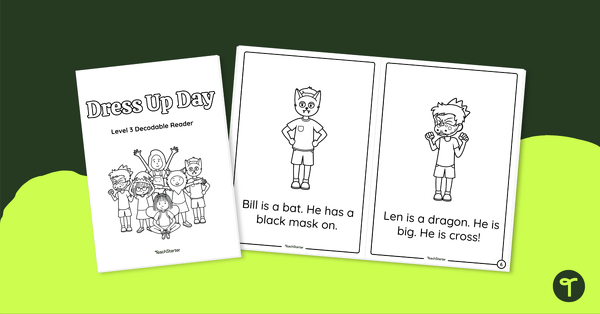
Dress Up Day - Decodable Reader (Level 3)
Develop confident, successful readers with this phonics-based, printable decodable book.